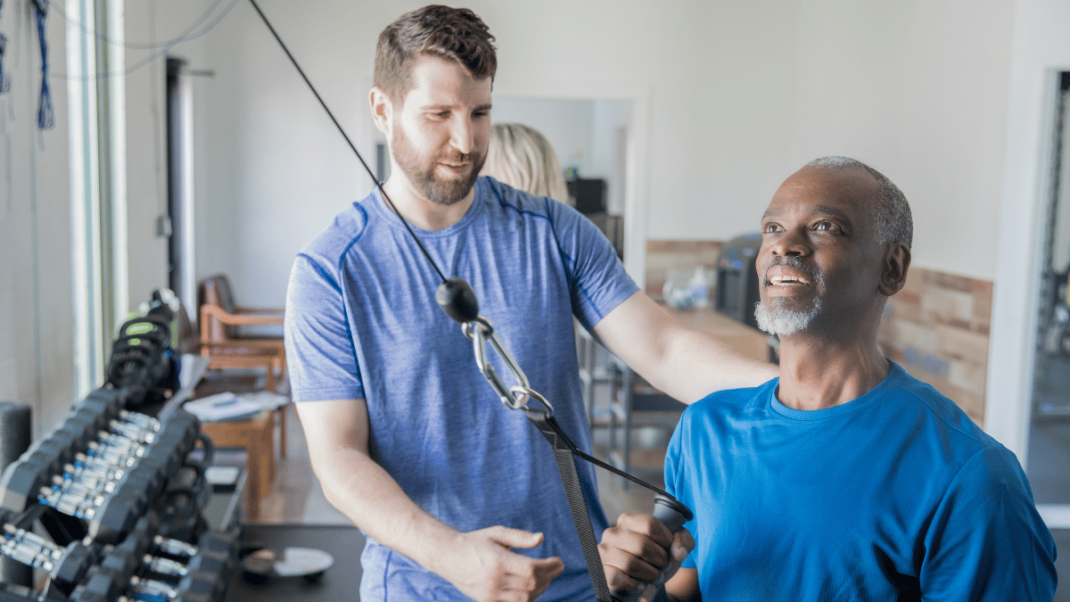Creating a Successful Internship Program
How to increase your bottom line and educate fellow fitness pros.
Internship programs provide supervised practical experience for people wanting to gain hands-on knowledge in a specific area of the health and fitness industry. Designing and running your own internship program can be a rewarding experience for both you and your students. It can also become an additional revenue stream for your business and increase awareness of your name as a leader in the personal training industry.
Types of Internship Programs
Internships can be categorized as either paid or unpaid experiences. An unpaid internship program is designed to allow recent graduates from university or personal training certificate courses to observe the practical skills they will need to work successfully with clients in the future. In these situations, interns are permitted to observe the teacher conducting an array of training sessions in exchange for cleaning, maintenance and/or basic office and administrative work.
A paid internship program, on the other hand, consists of more stringent
responsibilities for both the teacher and the students. In this type of program, attendees pay a program fee in exchange for in-depth, hands-on experience and education in a very specific topic area.
Although both paid and unpaid internship programs are beneficial, the focus of this article is to help you increase your bottom line. This article will discuss how to set up, price and run a successful and profitable paid internship program.
Benefits for You
You can garner several benefits from running a paid internship program. Here are a few reasons to consider internships as an additional revenue stream:
- The most obvious benefit is the potential to make money. If the fees you charge attendees total more than the money you spend setting up and marketing the program, then you make a profit.
- Having your own program enables you to tailor the course to your schedule. If you see clients during the week, then you can run internships on weekends. Alternatively, if you travel a lot for work, you can conduct the program when you are in town.
- One-on-one time with other dedicated fitness professionals helps develop networks of trainers whom you can call on if you expand your business or need qualified employees in the future.
- Whenever you teach another person, it sharpens your own skills and knowledge. As the old adage goes, “To read is to learn; to do is to know; to teach is to master.”
Benefits for Attendees
Why would fitness pros want to join your internship program? Highlight these benefits when marketing your program:
- Attendees acquire in-depth knowledge and gain experience from an industry expert. Your expertise lies in a specialized area in which you have a proven track record of successful implementation with your own clients.
- Attendees learn to apply the information taught during your program in a real-world setting with real people, and they gain hands-on experience in working with subjects under your tutorship.
- Attendees can ask specific questions regarding DVDs, books and/or articles that you have written or produced or that others have created on the subject matter.
How to Set Up a Program
The first thing to do is settle on a topic for your internship course that is relevant to your area of expertise and that you feel competent to teach. For example, we are a company that provides exercise solutions for people in chronic pain. Therefore, we have designed specialized internship programs such as “An Introduction to Structural Assessment and Corrective Exercise” and “Advanced Assessment and Corrective Exercise Program Design.” Keep the subject matter of your internship as specific as possible so you can advertise to niche markets who know what they want and will pay accordingly for specialized information and individual attention.
Once you have chosen the topic area for your program, decide on its duration. Your internship can last half a day, a day or a weekend, or you can spread the course over a series of dates throughout the year. The subject matter, the level of commitment required by you and the interns, and the financial commitment your attendees are willing to make will help you establish how long the program should last. Determining this information will help you design a program outline for marketing purposes.
The next question is how much to charge each attendee. Along with content and duration, your ability as a teacher and the number of people you enroll in each program will factor into pricing. If you are a seasoned professional accustomed to teaching other trainers and you limit the number of interns per course, then you can charge more. However, if you are new to the teaching arena, consider allowing more people into each course to keep the price point down while still providing a solid, hands-on experience for the interns.
Program Costs, Options and Considerations
The profit margin for your internship program will be directly affected by the difference between what you charge program attendees and what you spend on advertising, administration costs and the educational materials you provide. (It will also be impacted by the fees you spend on the continuing education credit [CEC] approval process. For a look at why you’d want to offer CECs for your internship program, see the sidebar “Obtaining CEC Approval for Your Program.”) Here are some important elements to consider if you want to maximize your potential for profit and success:
Advertising. There are many ways to let people know about your internship program. A good option is to advertise in health and fitness trade publications or at industry events; however, this may be too costly for most first-time internship entrepreneurs. Less expensive are mass mailings and/or e-mail campaigns. The least expensive option is to let people know about the internship program in person. If you are scheduled to appear at an industry conference or event, speak to attendees after you have lectured on a topic and suggest they attend your internship program if they want more personalized experience in that area. If you do not present at any industry events, you can always run seminars for other fitness professionals at local health clubs or community clubs and market your internship program afterward.
Educational Materials. To help interns get the most out of your program, you may want to assign them homework to do before attending the internship. You can recommend DVDs, articles, books and/or any reference materials you think may be helpful. If you supply items you have produced yourself (such as manuals or workbooks), you will decrease your materials costs while increasing the perceived value of the program. If you have no educational materials of your own, you can still recommend homework, but ask your attendees to purchase the suggested items themselves.
Administration Costs. Be sure to factor in the administration costs of running your program. Once people have signed up, you will need to send them confirmation of their registration, along with a receipt and a welcome kit. You should include a list of FAQs, to reduce the time you spend answering common questions, plus directions to the program location and a list of accommodation and travel options for out-of-town attendees.
Your Time. The most often overlooked and underestimated cost of creating an internship program is your personal time. Putting the materials together, advertising the program, answering questions about it and registering attendees all take time. It also takes time to answer follow-up e-mails and questions after the program is over. Interns are willing to pay a premium because they are getting individualized attention—so make sure you factor in enough time to provide reasonable follow-up for your attendees.
Keys to Success
Once you have set up the program and run it a couple of times to iron out the kinks, conduct your internships on a regular basis. Many of the setup expenses you incur will be one-time start-up costs. Therefore, each subsequent program will net more profit. Also, consider distributing feedback forms to help you improve the experience for the next group of interns.
The most important factor for ensuring success is to keep the experience personal and provide lots of hands-on experience that attendees cannot get elsewhere. Hands-on experience is the missing component in most personal trainers’ education and is invaluable in making sure they have a successful career.
Hands-on experience is the missing component
in most personal trainers’ education.
Although it can be a substantial added expense, you should seriously consider getting your internship program CEC-approved by as many of the accredited certifying agencies as possible. Doing so will make your program more attractive to potential attendees. The CEC application process costs anywhere between $50 and $250 per event, depending on the certifying agency and the number of events you offer per year. Go to www.acefitness.org, www.nsca-lift.org, www.acsm.org and www.nasm.org to find out more about the CEC provider requirements for particular agencies.
Another benefit of obtaining CEC approval is that many certifying agencies will allow their continuing education providers to lease the contact information of certified trainers for CEC marketing campaigns. While it will cost you money to lease this information, having access to quality leads can help you narrow your target market and increase the success of your advertising efforts.
Justin Price, MA
Justin Price, MA, is creator of the BioMechanics Method® Corrective Exercise Specialist (TBMM-CES) program, the fitness industry’s highest-rated CES credential, with trained professionals in 80 countries. He is also the author of several books, including The BioMechanics Method for Corrective Exercise academic textbook, and he was awarded the 2006 IDEA Personal Trainer of the Year. He has served as a subject matter expert for numerous brands and media organizations including ACE, TRX® and BOSU®; the BBC, Discovery Health and MSNBC; Arthritis Today, Men’s Health, Newsweek, Time, WebMD and Tennis; and Los Angeles Times, The New York Times and Wall Street Journal. Learn more about The BioMechanics Method®





